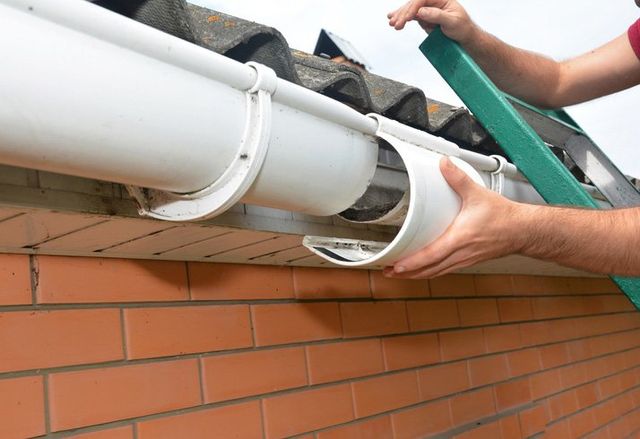The purpose of the gutter is to remove rain water from the perimeter of the home and downspouts that end too close to the home allow thousands of gallons of water to pour into the soil.
Gutters emptying to the ground.
These unprotected gutters allow debris small and large to enter the gutter travel down the downspout and into the in ground drainage.
The downspout can empty directly onto the ground but must be extended with flexible black tubing or pvc pipes 3 to 4 feet from the exterior of the home.
In this latter case the water then travels away from.
Many of these pipes are placed underground to avoid the eyesore of pipes laying on the ground next to your house.
Attach elbow to bottom end of downspout and connect a downspout extension to carry rainwater away from the foundation.
While the in ground drainage system might allow a certain amount of debris to enter and continue to flow allowing such debris into the system will eventually cause the system to reach capacity and will.
The gutters are hinged and you stand on the ground using a rod to flip the gutter over.
An underground drain pipe can become clogged in a variety of ways including leaf buildup or damage to the pipe itself.
There are different ways that you can channel the water in your gutters away from your home.
Others have vertical pipes that either connect to a drain or run directly into the ground itself.
If using a splash block at end of downspout be sure the splash block and ground upon which it rests slope away from the house.
Some houses use downspouts that direct the flow of water downhill or down a slanted driveway.
Clean gutters regularly to keep rainwater flowing freely.















































